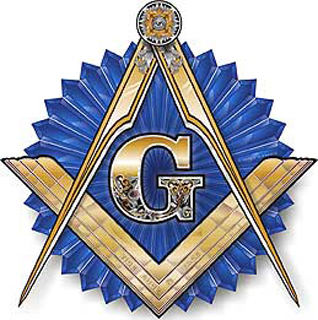What is Freemasonry?
Freemasonry is mankind’s oldest fraternity, and can be found throughout the world. It is a system of morality and improving one’s character, focused on tradition, ritual, education, charity, and fellowship. Within the “Family of Freemasonry” are opportunities for men, women, and youth, as well as organizations and activities for socializing and community service.
It’s symbolism is derived from its historical origins of the “operative” guilds of stone masons, and was influenced by and has in turn influenced a diversity of cultures and esoteric schools. A “secret society” in plain sight, the mysteries of Freemasonry are not about treasures and intrigues of power, but confidences between brothers, and ways Masons can recognize and trust one another, both in their own communities and wherever they travel.
From presidents to entertainers to astronauts, Freemasons (or “Masons”) have come from every walk of life and made a profound mark on the world. Masons were instrumental in the American Revolution, the development of the Declaration of Independence and the Bill of Rights, and were founders of the Royal Society, the very origin of Western Science. Today, Masonry is known for children’s hospitals, scholarships, medical research, and disaster relief, to name but a few of many efforts to make the world a better place and come to the aid of our fellow Man.
Lodges and Rites
At its heart, there are only three degrees of initiation, and upon receiving all three, a Mason is recognized as equals with all other Masons, regardless of rank or station in life. These degrees are given in the basic working place of Masonry — a “Blue Lodge” in your community. All Masons belong to at least one such lodge, and lodges are part of a “Grand Lodge”, such as the Grand Lodge of the State of New York. Each Grand Lodge is sovereign unto itself, and though they may work together, there is no central, global authority in Masonry.
Once you are a “Master Mason” (having received the third degree), a world of other opportunity awaits, such as membership in the Shrine, Grotto, or other social-philanthropic groups. There are also opportunities for study, such as belonging or affiliating with a “Lodge of Research”. Other “higher degrees” can be received in other Masonic bodies (such as the “York Rite” and the “Scottish Rite”), but do not form any sort of hierarchy, only life lessons through additional ritual experiences.
Freemasonry in New York
Nineteen Governors of New York State have been Masons. Many famous celebrities have been New York Masons, including Harry Houdini, Irving Berlin, and Al Jolson, among countless other notables.
The New York Grand Lodge Headquarters, also known as Masonic Hall, is located at 71 West 23rd Street (at the Avenue of the Americas) in the historic Chelsea district of Manhattan. Masonic Hall is open for free public tours weekdays from 11:00 a.m. to 4:00 p.m. and by appointment. Masonic Hall is home of the Chancellor Robert R Livingston Masonic Library of the Grand Lodge, which houses one of the most complete collections of Masonic literature and artifacts in the world.
The New York Masons own and operate the Masonic Care Community, a state-of-the-art retirement community in Utica, New York. It began operation in 1894 to provide care for indigent Masons, their widows and orphans. Today, the New York Masons provide a continuum of health care encompassing a range of facilities from an award-winning independent living campus to assisted living to skilled nursing and rehabilitation for Masons and non-Masons alike.
The world-renowned Masonic Medical Research Laboratory (MMRL) was founded by the Masons of New York State in 1958 and has pioneered in studies relating to the heart and diseases of the heart. The MMRL has been awarded many international awards for its research into cardiac arrhythmias and the biological and molecular genetics of the heart. The MMRL is located on the Masonic Care Community campus in Utica.
